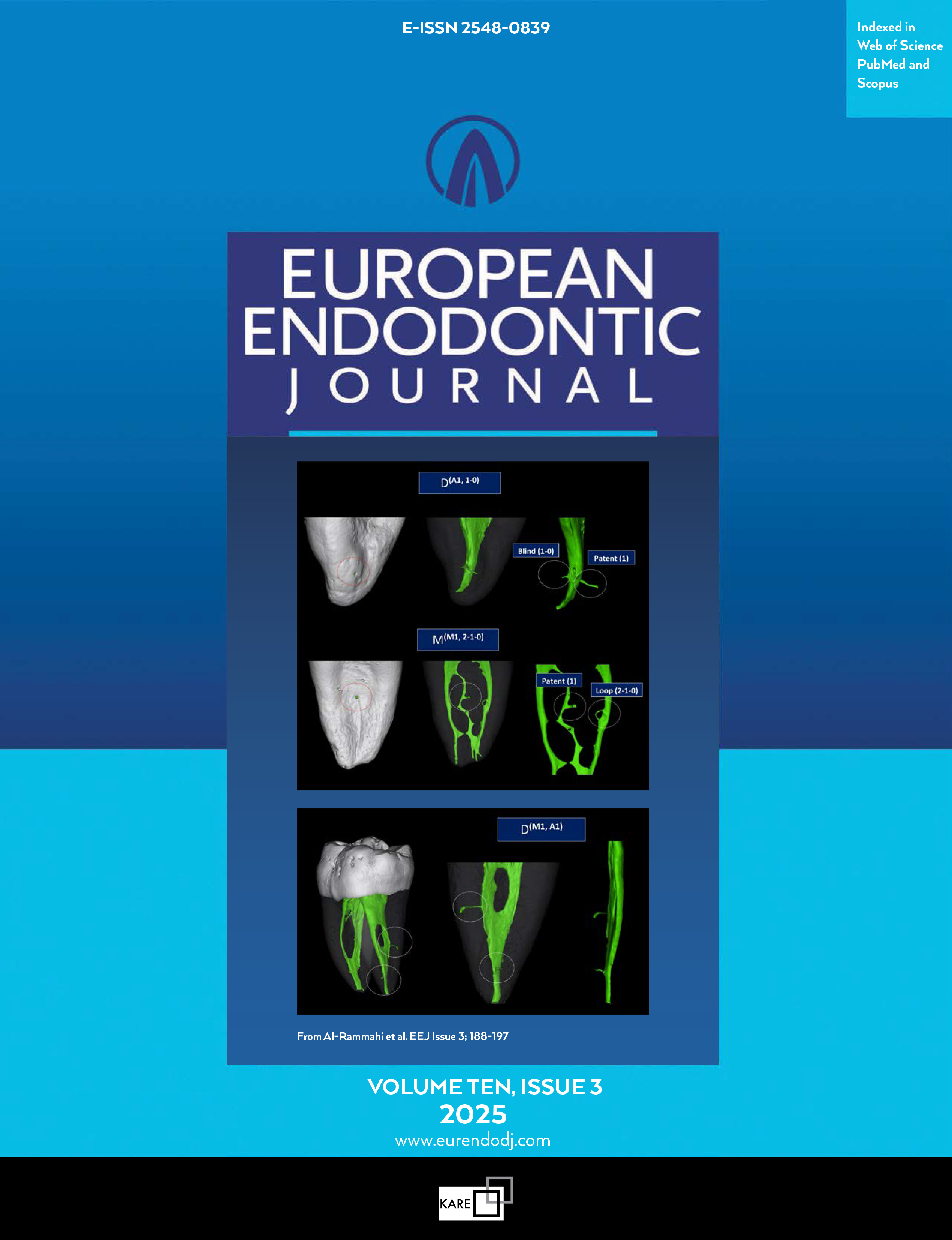Metrics
2024 IMPACT FACTOR
5 year Impact Factor
Eigenfactor Score
2024 CiteScore
Journal Citation Reports
(Clarivate 2025, JIF Rank)
Negotiating and Treating Lateral Canals: A Report of 7 Cases
Luis F. Jiménez-rojas1, Liliana P. Artaza2, Vanessa P. Pessotti3, Débora P. Sellera4, Jorge C. Alberdi5, Alessandra Baasch6, Karen Brisson-suárez7, Flávio R. F. Alves8, Isabela N. Rôças7, José F. Siqueira71Endo Chat Research Group, Rio de Janeiro, Brazil; Postgraduate Program in Dentistry, University of Grande Rio (UNIGRANRIO), Rio de Janeiro, Brazil; Department of Endodontics, Central University of Venezuela, Caracas, Venezuela2Endo Chat Research Group, Rio de Janeiro, Brazil; Department of Endodontics, Maimonides University, Buenos Aires, Argentina
3EndoChat Research Group, Rio de Janeiro, Brazil; Private practice, Vila Velha, Brazil; Private Practice, Vila Velha, Brazil
4Endo Chat Research Group, Rio de Janeiro, Brazil; Private Practice, Santos, Brazil
5Endo Chat Research Group, Rio de Janeiro, Brazil; Department of Endodontics, Catholic University of Córdoba, Córdoba and National University of Northeast, Faculty of Health Sciences, Corrientes, Argentina
6Postgraduate Program in Dentistry, University of Grande Rio (UNIGRANRIO), Rio de Janeiro, Brazil; Department of Endodontics, Santa María University, Caracas, Venezuela
7Endo Chat Research Group, Rio de Janeiro, Brazil; Postgraduate Program in Dentistry, University of Grande Rio (UNIGRANRIO), Rio de Janeiro, Brazil
8Postgraduate Program in Dentistry, University of Grande Rio (UNIGRANRIO), Rio de Janeiro, Brazil
This is a series of 7 cases in which the operator penetrated lateral canals with instruments. Two teeth present-ed with irreversible pulpitis, 4 with necrotic pulps, and 1 with previous treatment. Except for the teeth with pulpitis, all the others were associated with apical periodontitis. The main root canal was always relatively straight, with the lateral canals at the middle third of the root. Suggestive images of lateral canal presence were seen on periapical radiographs in five cases. The clinician introduced intentionally small hand instru-ments in the lateral canal in 5 cases, while the penetration was fortuitous in the others. The lateral canals were filled in all cases. Follow-up examination was possible in five cases, all of them showed evidence of successful clinical and radiographic outcomes. Introducing files into lateral canals may permit some preparation and penetration of irrigant solution, favoring disinfection and, consequently, enhancing the treatment outcome.
Keywords: Apical periodontitis, lateral canal, root canal infection, root canal treatmentManuscript Language: English
(543 downloaded)


